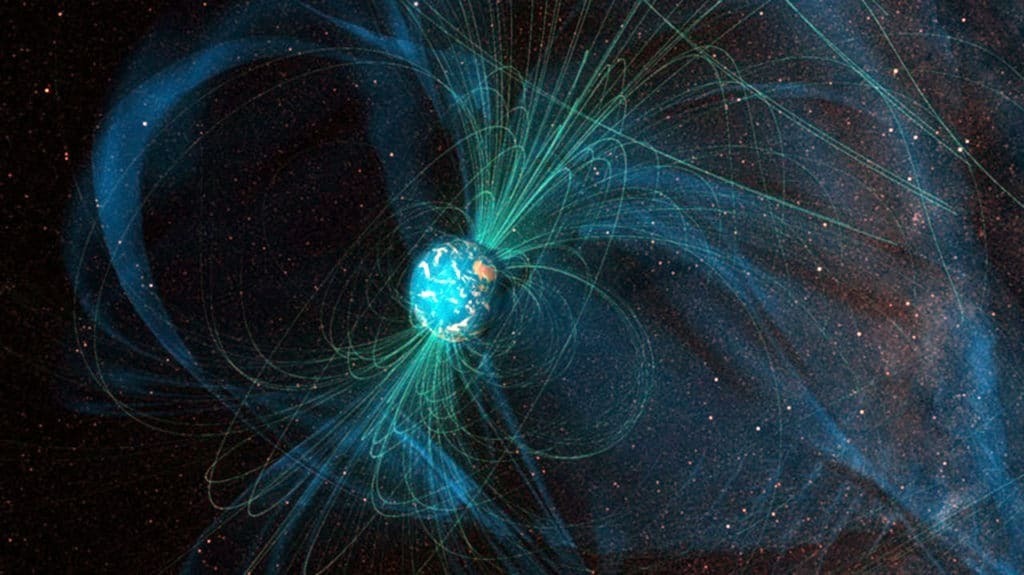#magnetic
7 Likes
One person like that
1 Comments
1 Shares
One person like that
https://youtube.com/watch?v=inRzIx_xY3U
A quick summary of why we are getting #auroras now at low latitudes.
#Magnetic #PoleFlip - Introduction
2 Likes
3 Likes

https://old.bitchute.com/video/8OVr7eRXZ2cX/
Could it be possible that the city is #magnetized because #magnetic #levitation #technology was used to transport the basalt columns from somewhere?
#megalithic
Temwen Island 2 : Magnetized City of Nan Madol
One person like that
THE STORM IS NOT OVER: A #CME hit #Earth's #magnetic field on May 10th, sparking the biggest #geomagnetic #storm in almost 20 years--an extreme (category G5) event. It is subsiding now (currently category G3), but it is not over. More CMEs are expected to hit Earth's magnetic field during the next 24-48 hours, and they could push the storm back to severe or even extreme levels

X-ray Solar Flares
6-hr max: M4 0220 UT May11
24-hr: X5 0123 UT May11
https://spaceweather.com/
5 Likes
https://www.youtube.com/watch?v=HvdLnUJahBs
#Sun’s #Magnetic #Field is About to #Flip, and There’s a Problem
One person like that

An overdue #CME struck #Earth's #magnetic #field on March 3rd. The impact sparked a #G2-class #geomagnetic #storm and bright #auroras around the Arctic Circle. Jan Eklind photographed the display from the window seat of an Airbus A20N at 35,000 feet:
"I was flying from Oslo to Kirkenes on Scandinavian Airlines when the CME struck," says Eklind. "Auroras spread across the sky with twilight in the distance and city lights below."
The CME was hurled into space on Feb. 28th when a magnetic filament connected to sunspot AR3592 erupted. It was not aimed directly at Earth, and forecasters were unsure if it would deliver even a glancing blow; however, the impact was stronger than expected.
https://spaceweather.com/
One person like that
#Annihilation or #teleportation
Boeing #MH370 disappears in flight with 239 passengers
Quote
This is a very #good #video regarding #magnetic #monopole #moment and the #spheres we've been seeing since #911 -- that recently resurfaced with this 'three #sphere' video going around.
Source: https://youtube.com/watch?v=DrHO--FixLI
2 Likes
2 Comments

#archaelogy #israel #battles #magnetic #field
There are many interesting articles about this subject.
City Of David ~ Destruction of Solomon's Temple
Archaeology - Earth's Magnetic Field
https://www.jpost.com/archaeology/article-720453
3 Likes
4 Comments
1 Shares

#space #magnetic #field #earth
Image: NASA
The Magnificent Magnetic Field Around Earth
Earth’s magnetic field, also known as the geomagnetic field, is the magnetic field that extends from the Earth’s interior to where it meets the solar wind, a stream of charged particles emanating from the Sun. This magnetic field is invisible but is vital for life on Earth’s surface.
- Scientists understand that Earth’s magnetic field has flipped its polarity many times over the millennia. **Shedding light on its importance, the knowledge can provide clues to understanding the future evolution of Earth, as well as the evolution of other planets in the solar system.
**https://www.techexplorist.com/early-magnetic-field-earth-stronger-previously-believed/29296/
The magnetosphere is a strong magnetic field that surrounds our planet. Acting as a shield, it deflects most solar energetic particle radiation that emanates from the Sun. For along with light, hot gases spew from the Sun and travel at a speed of a million miles an hour through space.
5 Likes
3 Comments

#sleep #magnetic #field #brain
Does the human brain have a magnetic field?
Brain magnetic fields.
- It has been established that a magnetic field occurs in the brain, spreading around the brain, which is detectable by magnetoencephalography (MEG; magnetic field) method (Agnati et al., 2018).
Scientific study throughout the years has revealed that the earth's electromagnetic energies have an effect on humans. This is due to the fact that, just like our planet, our bodies have magnetic poles. The positive magnetic pole of the Earth is to the north, while the negative pole is to the south. Similarly, our positive pole points to the head and our negative pole points to the feet. We all know that opposing poles of a magnet attract, whereas similar poles repel. This means that when we lie down with our heads to the north, we are directing our positive pole to the positive pole of the Earth. As a result, the energy produced is not beneficial since there is continual repelling. This causes sleep disruption and a variety of health problems. (In some cultures the Death Position is when dead people are placed with their head in the North and feet in the South.)
Sleep experts emphasis that individual preferences and environmental factors play a role in achieving a good night's rest. Factors such as comfort, room temperature, noise levels, and the quality of your mattress and pillows tend to have a pronounced impact on sleep quality. Therefore, it is recommended to focus on creating a sleep environment that is comfortable, quiet, and conducive to relaxation, tailored to your personal preferences.
However, given the influence of the earth's magnetic fields on human bodies, it is ideal to sleep with your head tilted south and your feet facing north. This helps to create natural balance and encourages a good night's sleep, as well as providing a range of health advantages. It is essential to approach this with an open mind and consider the overall sleep environment as well.
External and internal variables including age, sex, drug activity, sickness, psychological stress, employment, lifestyle, and the Earth's magnetic field all have a significant impact on sleep quality
2 Likes
2 Comments
2 Likes
One person like that
2 Likes
One person like that
https://youtube.com/watch?v=g0amdIcZt5I
The #world's #strongest #magnet is a million times stronger than #Earth's #magnetic #field.
National High Magnetic Field Laboratory
One person like that









